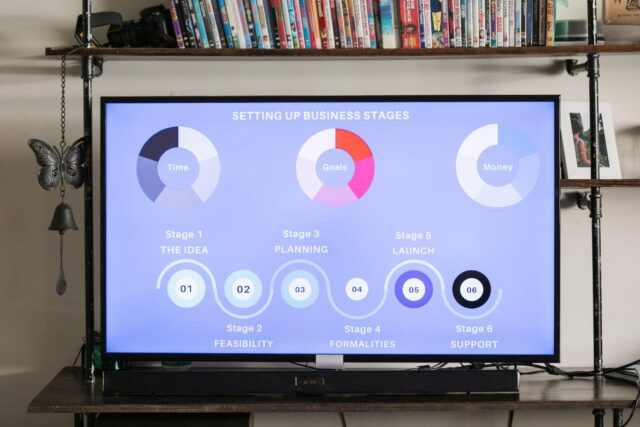Now loading...
Web design trends have come a long way since the early days of static HTML pages. Today’s websites are dynamic, interactive, and responsive, capable of adapting to any device or screen size. But what lies ahead for web design in the years to come? As technology continues to evolve at an unprecedented pace, the future of web design is poised to be more exciting than ever before.
In this article, we’ll take a trip down memory lane and revisit the state of web design in 2010, as well as explore the evolution of web design since then. We’ll also look at advancements in technology that are driving the future of web design, and why user experience is more important than ever. Finally, we’ll make some bold predictions for what web design might look like in 2023, and how designers can prepare for the future.
Looking Back: Web Design Trends in 2010
Back in 2010, web design was still in its infancy. Websites were often cluttered, with too much text, too many images, and not enough white space. Navigation was confusing, and many websites were not optimized for mobile devices. The use of Flash was still prevalent, which made websites slow to load and inaccessible on some devices.
Despite these limitations, however, some forward-thinking designers were already pushing the boundaries of what was possible with web design. The rise of responsive design, which allowed websites to adapt to different devices and screen sizes, was a major breakthrough. CSS3 and HTML5 introduced new design capabilities, such as animation, video, and interactivity.
 HTML and CSS: Design and Build Websites Shop Now
HTML and CSS: Design and Build Websites Shop Now
Every day, more and more people want to learn some HTML and CSS. Joining the professional web designers and programmers are new audiences who need to know a little bit of code at work (update a content management system or e-commerce store) and those who want to make their personal blogs more attractive. Many books teaching HTML and CSS are dry and only written for those who want to become programmers, which is why this book takes an entirely new approach.
- Introduces HTML and CSS in a way that makes them accessible to everyone―hobbyists, students, and professionals―and it’s full-color throughout
- Utilizes information graphics and lifestyle photography to explain the topics in a simple way that is engaging
- Boasts a unique structure that allows you to progress through the chapters from beginning to end or just dip into topics of particular interest at your leisure
This educational book is one that you will enjoy picking up, reading, then referring back to. It will make you wish other technical topics were presented in such a simple, attractive and engaging way!
The Evolution of Web Design
Since 2010, web design has evolved at a rapid pace. Responsive design has become the norm, with designers focusing on creating experiences that work seamlessly across all devices. Designers have also started to embrace simplicity, with minimalism and whitespace becoming more popular.
In addition, designers are thinking more about the user experience, creating interfaces that are intuitive and easy to use. This has led to the rise of UX design, which focuses on understanding user needs and designing interfaces that meet those needs.
Another trend in web design is the use of microinteractions, which are small interactions that users have with a website or app. These can be as simple as a button that changes color when clicked, or a notification that pops up when a new message arrives. These microinteractions can make a user’s experience more engaging and enjoyable.
 HTML and CSS QuickStart Guide: The Simplified Beginners Guide to Developing a Strong Coding Foundation, Building Responsive Websites, and Mastering Shop Now
HTML and CSS QuickStart Guide: The Simplified Beginners Guide to Developing a Strong Coding Foundation, Building Responsive Websites, and Mastering Shop Now
In HTML & CSS QuickStart Guide author, instructor, and 10+ year Fortune 500 tech company veteran David DuRocher breaks down HTML5 and CSS3 fundamentals into manageable, practical, and engaging segments designed for first-time developers.
David’s unique and engaging approach to teaching HTML and CSS principles means that readers are ready to start designing from the very first chapter without enduring an avalanche of boring jargon or dry technobabble.
Advancements in Technology
Advancements in technology are driving the future of web design. One of the most significant of these advancements is the rise of artificial intelligence (AI). AI can be used to personalize website content based on a user’s preferences and behavior, as well as automate tasks such as customer service and data analysis.
Another technology that is shaping the future of web design is virtual and augmented reality (VR/AR). VR/AR can create immersive experiences that allow users to interact with a website or app in a whole new way. This technology is still in its early stages, but is expected to become more prevalent in the coming years.
Finally, advancements in web development tools and platforms are making it easier than ever for designers to create dynamic and interactive websites. Tools like Webflow and Squarespace allow designers to create complex interfaces without writing a single line of code.
The Importance of User Experience
User experience (UX) has become a central focus of web design in recent years. A website that is difficult to use, confusing, or unattractive can turn users away and damage a brand’s reputation. On the other hand, a website that is easy to use, intuitive, and attractive can create a positive experience that keeps users coming back.
To create a great user experience, designers need to understand their users’ needs and behaviors. This requires research, testing, and iteration. Designers need to be willing to listen to feedback and make changes based on user feedback.
 Don’t Make Me Think, Revisited: A Common Sense Approach to Web Usability (3rd Edition) (Voices That Matter) Shop Now
Don’t Make Me Think, Revisited: A Common Sense Approach to Web Usability (3rd Edition) (Voices That Matter) Shop Now
Since Don’t Make Me Think was first published in 2000, hundreds of thousands of Web designers and developers have relied on usability guru Steve Krug’s guide to help them understand the principles of intuitive navigation and information design. Witty, commonsensical, and eminently practical, it’s one of the best-loved and most recommended books on the subject.
Now Steve returns with fresh perspective to reexamine the principles that made Don’t Make Me Think a classic–with updated examples and a new chapter on mobile usability. And it’s still short, profusely illustrated…and best of all–fun to read.
Predictions for Web Design in 2023
So what will web design look like in 2023? Here are a few predictions:
- Voice User Interfaces (VUIs) will become more prevalent, allowing users to interact with websites and apps using natural language.
- Artificial intelligence will be used to personalize website content based on a user’s preferences and behavior.
- Websites will be designed with multisensory experiences in mind, incorporating sound, touch, and even smell.
- Virtual and augmented reality will become more mainstream, enabling users to interact with websites and apps in new and exciting ways.
- Websites will be more accessible than ever before, with designers following best practices for accessibility and incorporating features such as text-to-speech and high-contrast modes.
Embracing New Design Trends
To prepare for the future of web design, designers need to be willing to embrace new design trends and technologies. They need to be open to new ideas and approaches, and be willing to experiment and iterate.
One design trend that is growing in popularity is brutalism, which emphasizes simplicity, functionality, and raw aesthetics. Another trend is the use of bold typography, which can create a striking visual impact and improve readability.
Designers also need to think about the multisensory experience of websites, incorporating sound and touch into their designs. They can also experiment with new forms of interactivity, such as 3D animations and immersive storytelling.
Designing for a Multisensory Experience
One of the most exciting trends in web design is the multisensory experience. This involves creating websites and apps that engage users’ senses beyond just sight. For example, sound can be used to create a mood or atmosphere, while touch can be used to create a tactile experience.
Designers can incorporate sound and touch into their designs in a variety of ways. For example, they can use sound effects or music to enhance the user experience, or they can use haptic feedback to create a physical sensation when a user interacts with a website or app.
The Role of Artificial Intelligence
Artificial intelligence (AI) is set to play a major role in the future of web design. AI can be used to personalize website content, automate tasks such as customer service and data analysis, and even create designs based on user preferences.
One area where AI is already making an impact is in chatbots. Chatbots can provide users with instant customer service, answering questions and providing assistance 24/7. As AI continues to evolve, we can expect to see more applications of this technology in web design.
Shaping the Future of Web Design
The future of web design is exciting and full of possibilities. As technology continues to evolve, designers need to be willing to embrace new trends and technologies, and to experiment and iterate. They need to focus on creating experiences that are intuitive, engaging, and accessible to all users.
By embracing the multisensory experience, incorporating AI, and designing for accessibility, designers can shape the future of web design and create experiences that are truly groundbreaking. The future of web design is waiting to be unleashed – are you ready to be a part of it?
Now loading...






